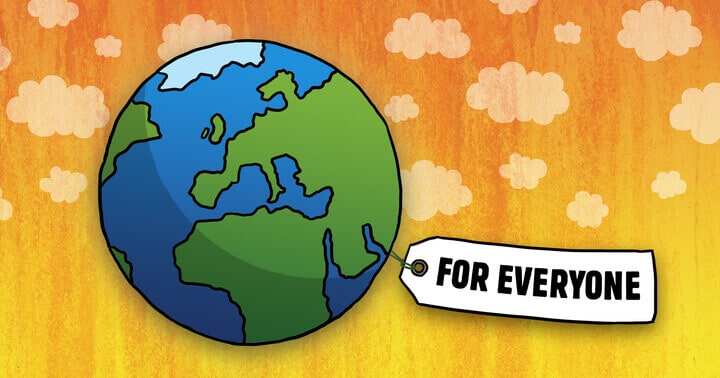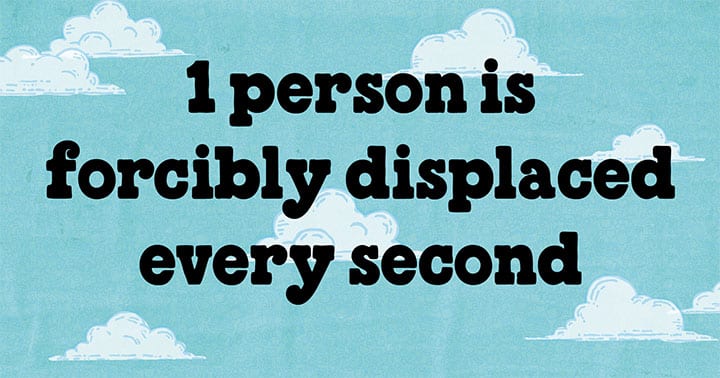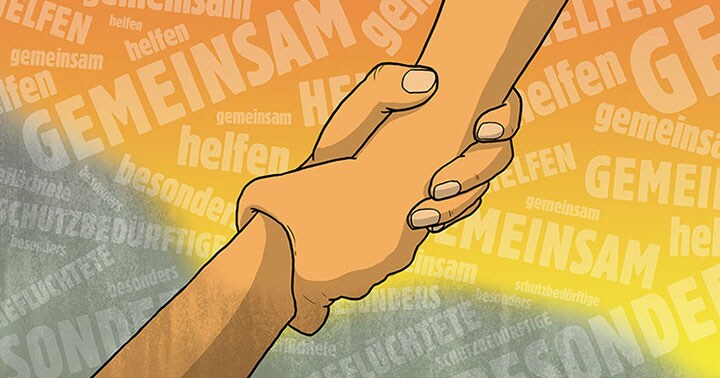
Living in the Northern Hemisphere, June 21—the summer solstice—is a big deal, and maybe you even celebrated the longest day of the year with an ice-cream cone. (A good choice!) But the day before the solstice—June 20—was Global Refugee Day, which is equally important to mark.
According to statistics published June 20 from the United Nations High Commissioner for Refugees (UNHCR), 70.8 million people have been forcibly displaced from their homes, most of them fleeing war, violence, or fear of persecution. Seventy million is a LOT of people. In fact, it’s double the population of Canada. Imagine evicting the whole of Canada—twice. Or displacing the entire population of Thailand. Inconceivable.
Throwing around a big number—like 70 million—can be a helpful way to grasp the enormity of the problem. But if you’re not one of those 70 million, a number that big can sometimes numb us to the fact that these displaced people are, well, people. So let’s break down the groups that make up this huge number—not because we want to create a “good” or “bad” designation, but simply because it’s helpful to remember how and why so many have gotten caught up in this situation. Here’s a closer look at the four main groups that comprise that 70.8 million, and a little more about what that number means in the context of forced global migration.

Who is a Migrant?
Human migration is the movement of people from one place in the world to another. It’s not something new, since the very early days of mankind, people have moved around our world. This is a broad definition of anyone who has left their country to relocate to another country—but it doesn’t tell the full story of how or why they left, or why they might be seeking a different life elsewhere. The reasons are varied; it could be someone moving to study or people that are leaving a broken economic system in their home country.
Who is an Asylum-Seeker?
An asylum-seeker is a person who has fled their country due to fear of persecution , war, or violence, and who is requesting international protection. A person seeking asylum may be afraid of being targeted for reasons of race, religion, nationality or political opinion, or is unable to return home due to armed conflict in their home country. The term “asylum-seeker” applies only to people who have applied for protection elsewhere under the 1951 Refugee Convention, but who are still waiting for their refugee claim to be processed in order to assume refugee status. Every refugee starts out as an asylum-seeker, but not every asylum-seeker will be officially recognized as a refugee, or given the protections afforded by refugee status if their application is refused by a country. Currently there are around 3.5million people that have submitted applications for asylum and are waiting to hear if they are successful.
Who is a Refugee?
The UNHCR (UN Refugee Agency) defines refugees as ‘persons fleeing armed conflict or persecution’. Refugees are recognized and protected under international law, since returning to their home countries would directly endanger their lives. The international law that provides this protection for all humans is called the 1951 Refugee Convention. According to the UNHCR, 57 percent of allcurrent refugees come from just three countries: Syria, Afghanistan, and South Sudan. There are approximately 25.9 million refugees globally, with many millions more internally displaced, or seeking asylum.
Who is an Internally Displaced Person?
Internally Displaced People (IDPs) have left their homes due to fear of war, violence, or persecution, but have remained in their home country. IDPs are protected by their home governments, even if that government is the cause of their displacement. Some 41.3 million people are considered internally displaced.
Where do all these terms come from?
The terms above are derived from the 1951 Refugee Convention, which clearly spells out the definition of a refugee and the associated legal protection, social rights, and other assistance refugees are eligible for under the Geneva Convention. The Convention also tells the countries who adhere to it what obligations to host and protect refugees are in place, with 145 countries currently signed up to the protocol.

Are the numbers of global refugees, asylum-seekers and internally displaced people going down?
Nope. UNHCR just published its most recent Global Trends document on June 20—World Refugee Day. According to the research, the global population of forcibly displaced people increased by 2.3 million in 2018. That translates to one person being forcibly displaced every two seconds.
About half of the displaced people are children under 18—and approximately 138,600 (but probably even more) are unaccompanied or separated from their parents. At 70.8 million, the global population of forcibly displaced people is at a record high.
Why are so many people being forcibly displaced?
There are several main reasons for the increase: war, violence, or fear of persecution, as well as famine, poverty, and natural disasters. Climate change is increasingly at the heart of the natural disasters that lead to famine and poverty, leaving people with no choice other than to leave their homes.
People are people are people are people…
Whether migrants, asylum-seekers, refugees or internally displaced people, each man, woman, and child has hopes, dreams, and aspirations—just like you do. No one wants to be forcibly displaced. And no one wants to feel like a number or a statistic. So even though the definitions laid out by the Refugee Convention tell us a little more about who, where and at what stage displaced people are in the process, we urge you to remember that people are people. They’re our neighbours, friends, and families. We could be in their shoes. And if we were, we’d hope that others would help us find a safe place to call home.
Ein wahrer Leckerbissen für deinen Posteingang!
Melde dich jetzt an und wir sorgen dafür, dass du die neuesten Insider-Infos über den ganzen Spaß und die tollen Sorten bei Ben & Jerry's erhältst! Das ist wie ein Dessert für deinen Posteingang und hier wünscht du dir ganz sicher einen Nachschlag.

